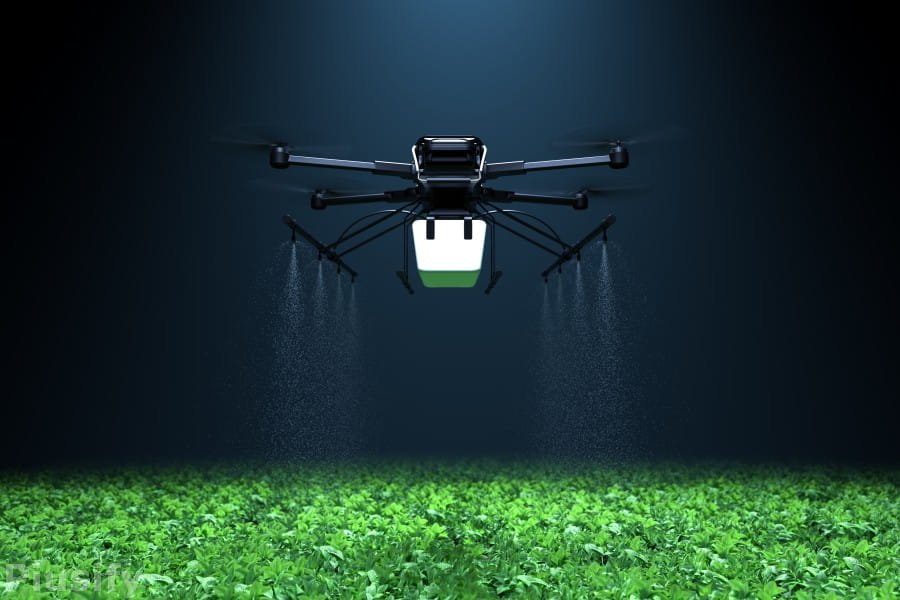Conquering Kilimanjaro: Roof of Africa
Kilimanjaro, the highest mountain in Africa, stands tall at 19,341 feet above sea level and is a wonder that attracts adventurers from all over the world. Climbing Kilimanjaro is a once-in-a-lifetime experience that offers stunning views of Tanzania and the surrounding areas. It’s a challenging yet rewarding journey, and one that requires a lot of preparation and planning.
In this post, we’ll take you on a journey to the roof of Africa and show you what it takes to conquer Kilimanjaro. From choosing the right route and gear to prepare physically and mentally, we’ll cover everything you need to know to make your Kilimanjaro climb a success. So, get ready to embark on a journey of a lifetime as we explore Kilimanjaro, one of the world’s most awe-inspiring natural wonders.
-
Introduction: The allure of Mount Kilimanjaro

Introduction: The allure of Mount Kilimanjaro.
Mount Kilimanjaro, the majestic peak that stands tall at 5,895 meters (19,341 feet), is not just any mountain. It is the highest peak in Africa and one of the most iconic and sought-after destinations for adventure enthusiasts around the world. Situated in Tanzania, this dormant volcano attracts thousands of climbers each year, all determined to conquer its formidable slopes and reach the roof of Africa.
The allure of Mount Kilimanjaro lies not only in its impressive height but also in its diverse and breathtaking landscapes. From lush rainforests to barren alpine deserts and snow-capped peaks, Kilimanjaro offers a unique and awe-inspiring experience for those brave enough to undertake its ascent.
But what is it that draws adventurers from all corners of the globe to this challenging endeavor? Perhaps it is the allure of standing atop the highest point in Africa, gazing upon the vast plains and distant horizons. Or maybe it is the personal accomplishment of pushing oneself beyond limits and conquering a physical and mental challenge like no other.
For many, climbing Kilimanjaro is a once-in-a-lifetime opportunity to immerse themselves in the raw beauty of nature and experience the thrill of pushing their boundaries. It is a chance to disconnect from the chaos of everyday life and reconnect with oneself, finding solace in the rhythm of each step and the simplicity of survival in a demanding environment.
The journey to the summit of Kilimanjaro is not an easy one. It requires careful planning, physical fitness, mental resilience, and an unwavering determination. But for those who embark on this extraordinary adventure, the rewards are immeasurable. The sense of accomplishment, the breathtaking vistas, and the camaraderie forged with fellow climbers create memories that will last a lifetime.
In this blog series, we will delve into the details of conquering Kilimanjaro, sharing tips, insights, and personal experiences to help you prepare for your own journey to the roof of Africa. Join us as we explore the challenges, triumphs, and wonders of this remarkable expedition, and discover the allure that has captivated adventurers for generations.
-
Preparing for the climb: Physical and mental fitness

Preparing for a climb to the top of Mount Kilimanjaro requires not only physical fitness but also mental strength. This iconic peak stands tall at 5,895 meters, making it the highest mountain in Africa. As you embark on this incredible journey, it is essential to invest time and effort into preparing your body and mind for the challenges that lie ahead.
Physical fitness is crucial for conquering Kilimanjaro. The climb demands endurance, strength, and cardiovascular fitness. Incorporate a combination of cardio exercises, such as running or cycling, to improve your endurance levels. Focus on building strength in your legs and core through exercises like squats, lunges, and planks. Additionally, consider incorporating hiking and uphill training into your routine to simulate the conditions you will encounter on the mountain.
While physical fitness is vital, mental strength is equally important. Climbing Kilimanjaro is not just a physical feat; it is a mental battle as well. The altitude, long hours of trekking, and unpredictable weather conditions can test your mental resilience.
Prepare yourself mentally by practicing mindfulness and meditation techniques that can help you stay focused and calm during challenging situations. Visualize yourself reaching the summit and cultivate a positive mindset that will keep you motivated throughout the climb.
In addition to physical and mental preparation, it is essential to consult with a healthcare professional before attempting the climb. They can assess your overall health and provide guidance on any necessary vaccinations or medications you may need.
By investing time and effort in both physical and mental fitness, you will increase your chances of successfully conquering Kilimanjaro. Remember, this journey is not just about reaching the roof of Africa but also about discovering the strength and resilience within yourself. So lace up your boots, train hard, and embark on this unforgettable adventure of a lifetime.
-
Choosing the right route: A breakdown of the different options
When it comes to conquering Kilimanjaro, choosing the right route is crucial. With multiple options available, it’s important to understand the differences and choose the one that best suits your preferences and abilities.
1. Marangu Route: Also known as the “Coca-Cola” route, it is one of the most popular routes due to its shorter duration and comfortable huts with basic amenities. However, it is considered less scenic and has a higher difficulty level due to its steep and rocky sections.
2. Machame Route: Known as the “Whiskey” route, it is a popular choice among trekkers seeking a more challenging and scenic experience. It offers diverse landscapes, including rainforests, moorlands, and alpine deserts. It requires good physical fitness and acclimatization due to its steep and demanding terrain.
3. Lemosho Route: This route is renowned for its scenic beauty and low traffic compared to other routes. It offers a diverse range of landscapes, including rainforests, heath, and alpine deserts. With a longer duration, it provides excellent acclimatization, increasing the chances of successful summiting.
4. Rongai Route: The only route that approaches Kilimanjaro from the north, it is less crowded and offers a unique perspective. It passes through beautiful wilderness areas and is known for its wildlife sightings. With a gradual ascent, it provides good acclimatization and is suitable for those seeking a more remote experience.
5. Northern Circuit Route: The newest and longest route, it offers the longest time for acclimatization, increasing the chances of successful summiting. It provides breathtaking views and diverse landscapes, including rainforests, alpine deserts, and glaciers. It is recommended for experienced trekkers looking for a less crowded and more challenging adventure.
Before choosing a route, consider factors such as the level of difficulty, duration, scenery, traffic, and acclimatization opportunities. It’s crucial to assess your fitness level, experience, and preferences to ensure a safe and enjoyable journey to the Roof of Africa.
-
Essential gear and packing list

When embarking on the incredible journey of conquering Mount Kilimanjaro, proper gear and packing are paramount to ensure a safe and successful expedition. The extreme altitude, varying climate zones, and challenging terrain demand careful consideration of the essentials you’ll need to bring along. Here is a comprehensive gear and packing list to help you prepare for this awe-inspiring adventure.
1. Clothing:
– Base Layers: Moisture-wicking and breathable tops and bottoms to regulate body temperature.
– Insulating Layers: Fleece or down jackets to provide warmth during colder temperatures.
– Waterproof Shell: A durable and waterproof jacket and pants to protect against rain and wind.
– Hiking Pants: Lightweight, quick-drying pants for comfort and flexibility.
– Hiking Shirts: Long-sleeved shirts to protect against the sun and bugs.
– Hiking Socks: Thick, moisture-wicking socks for blister prevention.
– Hat and Gloves: Insulated hat and gloves to protect against extreme cold.
2. Footwear:
– Hiking Boots: Sturdy, waterproof boots with ankle support for the rugged terrain.
– Gaiters: To keep debris, snow, and moisture out of your boots.
3. Sleeping Gear:
– Sleeping Bag: A warm, lightweight, and compact sleeping bag suitable for sub-zero temperatures.
– Sleeping Pad: An inflatable or foam sleeping pad for insulation and comfort.
4. Backpack:
– Daypack: A small, lightweight backpack for daily essentials during hikes.
5. Trekking Gear:
– Trekking Poles: Adjustable and sturdy poles for stability and support on steep sections.
– Headlamp: Essential for night-time hikes and navigating camp.
6. Personal Items:
– Water Bottles: Durable, reusable water bottles to stay hydrated throughout the trek.
– Toiletries: Basic toiletries such as toothbrush, toothpaste, and biodegradable soap.
– Sunscreen: High SPF sunscreen to protect against the intense sun at higher altitudes.
– First Aid Kit: Including bandages, pain relievers, altitude sickness medication, and any personal medications.
7. Miscellaneous:
– Camera: Capture the breathtaking views along the way.
– Duct Tape: A multi-purpose item for quick repairs.
– Snacks: Energy bars, trail mix, and other lightweight snacks for sustenance.
Remember, packing light is key, but ensuring you have the necessary gear to keep you comfortable and safe is equally important. Prioritize quality items that are durable, lightweight, and appropriate for the conditions you’ll encounter on your journey to the Roof of Africa.
-
Acclimatization: Understanding altitude sickness and how to prevent it
Acclimatization is a crucial aspect of any successful climb to the summit of Mount Kilimanjaro. As you ascend higher and higher, the altitude increases, and with it comes the risk of altitude sickness. Also known as acute mountain sickness (AMS), this condition can affect anyone regardless of their fitness level or prior climbing experience.
Altitude sickness occurs when your body is unable to adjust to the reduced oxygen levels and lower air pressure at higher altitudes. Symptoms can range from mild headaches, fatigue, and nausea to more severe forms such as dizziness, shortness of breath, and even pulmonary or cerebral edema.
To minimize the risk of altitude sickness and ensure a safe and enjoyable climb, it is essential to understand the prevention strategies. Gradual ascent is the key, allowing your body enough time to acclimatize to the changing conditions. This means choosing a longer route with multiple acclimatization days built into the itinerary.
During these acclimatization days, climbers are encouraged to hike to higher elevations during the day and then descend to sleep at a lower altitude. This process helps the body adjust by increasing red blood cell production and improving oxygen intake. It is crucial to follow the guidance of experienced guides who understand the importance of proper acclimatization.
In addition to a gradual ascent, staying hydrated is essential. Drink plenty of water throughout the climb, even when you may not feel thirsty. Avoid alcohol and caffeine, as they can further dehydrate the body and increase the risk of altitude sickness.
Maintaining a healthy diet rich in carbohydrates and avoiding heavy meals at higher altitudes can also make a significant difference. Your body needs the fuel to function properly and cope with the demands of climbing at high altitude.
Awareness of your own body and its reactions is crucial. If you experience any symptoms of altitude sickness, it is important not to ignore them. Communicate with your guide and group members about how you are feeling, as they can provide guidance and support.
Remember, conquering Kilimanjaro is not just about reaching the summit but also about ensuring your safety and well-being throughout the journey. By understanding altitude sickness and taking the necessary precautions, you can increase your chances of a successful climb and create lasting memories of this incredible adventure.
-
The climb begins: A day-by-day account of the journey
Day 1: The Journey Begins
Excitement fills the air as our group gathers at the base of Mount Kilimanjaro, ready to embark on this monumental adventure. After a thorough briefing by our experienced guides, we set off on our first day of climbing. The trail leads us through lush rainforests, where the vibrant greenery and the chorus of chirping birds create a serene ambiance. The sounds of our footsteps echo through the trees as we make our way towards our first campsite, already feeling the anticipation building for the challenges that lie ahead.
Day 2: Into the Alpine Desert
Leaving the rainforest behind, we enter the alpine desert zone. The landscape undergoes a dramatic transformation, with sparse vegetation and vast expanses of rocky terrain. The sun beats down on us relentlessly, and the thin air becomes a constant reminder of the altitude we are gaining. Our guides encourage us to take frequent breaks to acclimatize and stay hydrated. Despite the physical demands, the breathtaking views of the surrounding peaks and valleys serve as a constant reminder of the beauty that awaits us at the summit.
Day 3: Ascending the Barranco Wall
Today, we face one of the most thrilling and challenging sections of the climb – the Barranco Wall. With its steep ascent and narrow ledges, it tests our physical strength and mental determination. As we navigate our way up the wall, our guides provide unwavering support, guiding us through the best routes and offering words of encouragement. The sense of accomplishment as we conquer this obstacle is immeasurable, and it fuels our determination to keep pushing forward.
Day 4: Alpine Desert to the Arctic Zone
Leaving the alpine desert behind, we enter the arctic zone, where the landscape becomes increasingly barren and surreal. The air grows thinner as we gain altitude, making each step more challenging. Despite the physical strain, the panoramic views of glaciers and snow-capped peaks inspire us to keep going.
Nightfall brings a sight that will forever be etched in our memories – a starlit sky so clear and vibrant, it feels like we can almost reach out and touch the stars.
Be part of our family, just by submitting your nice Email below here.
Day 5: Summit Night
The most anticipated and demanding day of the journey has arrived – summit night. With the moon lighting our path, we begin the final ascent to Uhuru Peak. The biting cold and piercing wind remind us of the sheer determination required to conquer this formidable challenge. Every step is a triumph of willpower and resilience. As the first rays of dawn break through the horizon, we reach the summit, standing atop the Roof of Africa. The elation and sense of accomplishment that fills our hearts is unparalleled.
Day 6: Descending and Reflection
As we begin our descent, a mix of emotions fills the air. We reflect on the incredible journey we have undertaken, the bonds we have formed, and the personal growth we have experienced. The descent allows us to fully appreciate the diverse landscapes that we encountered on our way up.
The barren Arctic zone gives way to the alpine desert, and finally, the vibrant greenery of the rainforest welcomes us back. We descend with a renewed sense of appreciation for the beauty and power of nature.
Conquering Kilimanjaro is a life-changing experience, testing our limits and pushing us to new heights – both figuratively and literally. The journey is filled with physical and mental challenges, but the rewards are immeasurable. As we
-
Challenges and triumphs along the way

Climbing Mount Kilimanjaro is no easy feat. It is a challenging adventure that requires physical endurance, mental strength, and determination. Along the way, climbers face numerous obstacles and experience both triumphs and setbacks.
One of the biggest challenges of climbing Kilimanjaro is the altitude. As you ascend higher, the oxygen levels decrease, making it harder to breathe and causing symptoms of altitude sickness. Climbers must acclimatize properly, taking regular breaks and allowing their bodies to adjust to the changing conditions. It can be physically demanding and mentally draining, but the reward of reaching the summit makes it all worthwhile.
Click here to have a good list of 10 gadgets that makes life fun.
Another challenge is the unpredictable weather. Kilimanjaro is known for its ever-changing weather patterns, from scorching heat to freezing temperatures, and even heavy snowfall. Climbers must be prepared for all types of weather conditions, carrying proper gear and clothing to protect themselves from the elements. The extreme cold and strong winds can make the climb more challenging, testing the climbers’ resilience and determination.
Despite the hardships, there are also triumphs along the way. Each step closer to the summit brings a sense of accomplishment and excitement. The breathtaking views of the surrounding landscapes, the beautiful sunrise or sunset, and the camaraderie among fellow climbers all contribute to the triumphs of the journey.
Reaching the summit of Kilimanjaro is an incredible achievement. It symbolizes the conquering of personal limitations and the fulfillment of a dream. The feeling of standing on the “Roof of Africa” is indescribable, a mix of joy, relief, and pride.
The journey to the top of Kilimanjaro is filled with challenges and triumphs. It pushes climbers to their limits, both physically and mentally. Overcoming the obstacles and celebrating the victories along the way make the experience unforgettable and transform it into a life-changing adventure.
-
Reaching the summit: A moment of pure accomplishment
Reaching the summit of Mount Kilimanjaro is a moment of pure accomplishment that is hard to put into words. As you stand at Uhuru Peak, the highest point in Africa, you are filled with a sense of awe and wonder at the sheer magnitude of your achievement. The journey to the top is not an easy one, with treacherous trails, unpredictable weather, and the ever-present challenge of altitude sickness. But with determination, perseverance, and a little bit of luck, you have made it to the top.
The final push to the summit is often the most grueling part of the entire climb. The air is thin, making each step a struggle, and your body is pushed to its limits. But as you ascend, the landscape unfolds before you in a breathtaking display of natural beauty. The glaciers glisten in the early morning light, and the vast expanse of the African plains stretches out below you.
As you reach the summit, a rush of emotions washes over you. The overwhelming sense of accomplishment is mixed with a feeling of humility and reverence for the mountain and all that it represents. Standing at the top of Kilimanjaro, you are reminded of the power of nature and the strength of the human spirit.
The view from the summit is like no other. The world seems to stretch out in all directions, and you feel on top of the world, both literally and figuratively. It is a moment that will stay with you forever, a memory that you will cherish and share with others.
Reaching the summit of Mount Kilimanjaro is not just about conquering a physical challenge; it is about pushing yourself beyond what you thought was possible, overcoming obstacles, and discovering the strength and resilience within you. It is a journey that will change you, leaving you with a newfound belief in your capabilities and a sense of accomplishment that cannot be matched.
As you take in the breathtaking views from the summit, you can’t help but feel a sense of gratitude and appreciation for the opportunity to experience this incredible adventure. The journey to the roof of Africa may be tough, but the rewards are immeasurable. Reaching the summit of Kilimanjaro is a moment that will forever be etched in your memory as a testament to the power of determination, courage, and the human spirit.
-
Lessons learned from conquering Kilimanjaro

Conquering Kilimanjaro is not just a physical feat; it is also a mental and emotional journey that teaches valuable life lessons. As I stood on the summit of Africa’s highest peak, I couldn’t help but reflect on the challenges and triumphs that led me there.
The first lesson I learned was the power of perseverance. Climbing Kilimanjaro is not easy. The terrain is rugged, the air is thin, and the altitude can take a toll on your body. It would have been easy to give up when faced with exhaustion or doubt, but I pushed through. I learned to keep putting one foot in front of the other, even when every step felt like a struggle. This lesson has stayed with me in my everyday life, reminding me that with determination and persistence, I can overcome any obstacle.
Another lesson Kilimanjaro taught me is the importance of teamwork. I was part of a group of climbers, and we relied on each other for support and encouragement. We shared the load of carrying equipment, cheered each other on during difficult moments, and celebrated together when we reached each campsite. This experience reminded me that we are stronger together and that collaboration is key to achieving success.
Additionally, Kilimanjaro taught me the value of embracing discomfort. Throughout the journey, I faced extreme temperatures, physical exhaustion, and moments of doubt. However, it was in these uncomfortable moments that I experienced the most growth.
I learned to embrace discomfort as a catalyst for personal transformation and to push beyond my comfort zone. This lesson has empowered me to take on new challenges and embrace the unknown in other areas of my life.
Finally, Kilimanjaro taught me to appreciate the beauty of nature and the importance of conservation. The mountain’s breathtaking landscapes and diverse ecosystems reminded me of the need to protect our environment. Witnessing the impact of climate change and seeing firsthand the fragility of these ecosystems inspired me to become an advocate for sustainable practices and to make more conscious choices in my daily life.
Conquering Kilimanjaro was an experience that went beyond reaching the summit. It taught me valuable lessons that have shaped me as a person. The journey to the roof of Africa taught me perseverance, the power of teamwork, the importance of embracing discomfort, and the need to protect our planet. These lessons will forever stay with me, reminding me that with the right mindset and determination, I can overcome any challenge that comes my way.
-
Conclusion: Reflecting on the transformative experience
Reaching the summit of Mount Kilimanjaro is an achievement that goes far beyond the physical act of climbing. It is a transformative experience that leaves a lasting impact on one’s life. As we conclude this journey to the Roof of Africa, it is important to take a moment to reflect on the profound lessons learned and personal growth gained from conquering this majestic peak.
Scaling Kilimanjaro requires dedication, perseverance, and mental fortitude. The physical challenges faced on the mountain are undeniable, with steep slopes, unpredictable weather, and high altitudes pushing climbers to their limits. However, it is the mental and emotional challenges that truly test one’s character.
Throughout the ascent, climbers are forced to confront their fears, doubts, and limitations. Each step forward requires a deep inner strength and a belief in oneself. As the journey progresses, the mind becomes clearer, shedding the burdens of everyday life and allowing for a deeper connection with nature and one’s own inner self.
The breathtaking landscape of Kilimanjaro, with its vast savannahs, lush rainforests, and otherworldly alpine deserts, serves as a constant reminder of the beauty and fragility of our planet. Standing atop the Uhuru Peak, the highest point of Kilimanjaro, one becomes acutely aware of the interconnectedness of all living beings and the importance of preserving our natural wonders.
Beyond the physical and spiritual aspects, conquering Kilimanjaro also fosters a sense of camaraderie and unity among fellow climbers. Strangers become friends as they share in the triumphs and challenges of the journey. The sense of accomplishment and mutual support create bonds that last long after the descent from the mountain.
In conclusion, the journey to the Roof of Africa is not just about reaching the summit of Kilimanjaro; it is about the personal growth, inner strength, and renewed perspective gained along the way. It is a testament to the indomitable human spirit and a reminder of the immense beauty and power of nature.
So, if you ever find yourself longing for a transformative adventure, consider embarking on the journey to conquer Kilimanjaro and experience the awe-inspiring magic of Africa’s highest peak.
We hope you enjoyed reading about our journey to conquer Kilimanjaro, the Roof of Africa. Scaling this majestic peak is an experience like no other, and we wanted to share our adventure with you. From the physical preparation to the mental challenges faced along the way, climbing Kilimanjaro is a test of determination and resilience.
We hope our story has inspired you to embark on your own extraordinary journey, whatever it may be. Remember, the sky is not the limit; it’s just the beginning.














